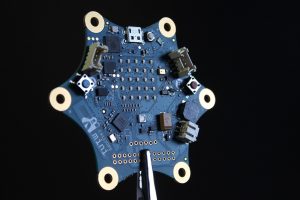Organic Circuit Boards: Living Electronics
In today’s fast-paced world, technology is constantly evolving and finding new ways to enhance our lives. From smartphones to smart home systems, we are surrounded by electronic devices that have become an integral part of our daily routines. However, these devices also have a downside to them – the production and disposal of traditional electronic components can have harmful effects on both the environment and human health. This is where organic circuit boards and living electronics come into play. In this article, we’ll explore the concept of organic circuit boards and how they are paving the way for a greener and more sustainable future.
The Birth of Organic Circuit Boards
Traditional circuit boards are made from non-renewable materials such as fiberglass, copper, and plastic, all of which have a negative impact on the environment. These materials also have a limited lifespan and cannot be easily recycled, leading to a huge amount of electronic waste every year. With the growing concern for sustainability, researchers have been looking for alternative materials to create circuit boards that are not only eco-friendly but also high-performing. This led to the development of organic circuit boards – electronic devices made from natural materials such as wood, cotton, and silk.
How Do Organic Circuit Boards Work?
Unlike their traditional counterparts, organic circuit boards rely on carbon-based compounds, proteins, and natural polymers to conduct electricity. These materials are biodegradable and have a lower environmental impact compared to traditional materials. They are also less energy-intensive to produce, making them a more sustainable option. Moreover, these circuit boards are flexible and can be easily molded into various shapes, unlike rigid and bulky traditional circuit boards. This makes them perfect for applications in wearable electronics and other flexible devices.
The Concept of Living Electronics
The use of organic materials stretches beyond just creating circuit boards. The concept of living electronics takes a step further by incorporating living organisms into electronic devices. These organisms, usually bacteria, can be genetically modified to respond to different stimuli such as light, heat, or even chemicals. This opens up a whole new world of possibilities for creating self-sustaining electronic devices that can heal and adapt to changing environments.
The Potential of Living Electronics
The incorporation of living organisms into electronic devices has numerous potential applications. For instance, sensors made from living bacteria can detect harmful chemicals in the environment and emit a light signal to warn humans of the danger. Similarly, living electronics can be used in the medical field, where they can be programmed to respond to specific diseases or even aid in drug delivery. The use of living electronics can also reduce the need for traditional electronic components, which are often non-recyclable, further reducing electronic waste.
The Future of Organic Circuit Boards and Living Electronics
The development of organic circuit boards and living electronics is still in its early stages, and there is a lot more research to be done before we see them being widely used. However, with the increasing demand for sustainable technology, it is only a matter of time before they become mainstream. The potential for these technologies is immense, and they could pave the way for a greener and more sustainable future.
In Conclusion
In a world where technology is constantly growing, it is crucial to consider the environmental impact of our actions. Organic circuit boards and living electronics offer a sustainable solution to traditional electronic components and have the potential to revolutionize the tech industry. As we continue to strive for a greener future, it is essential to support the development and adoption of these innovative technologies.










